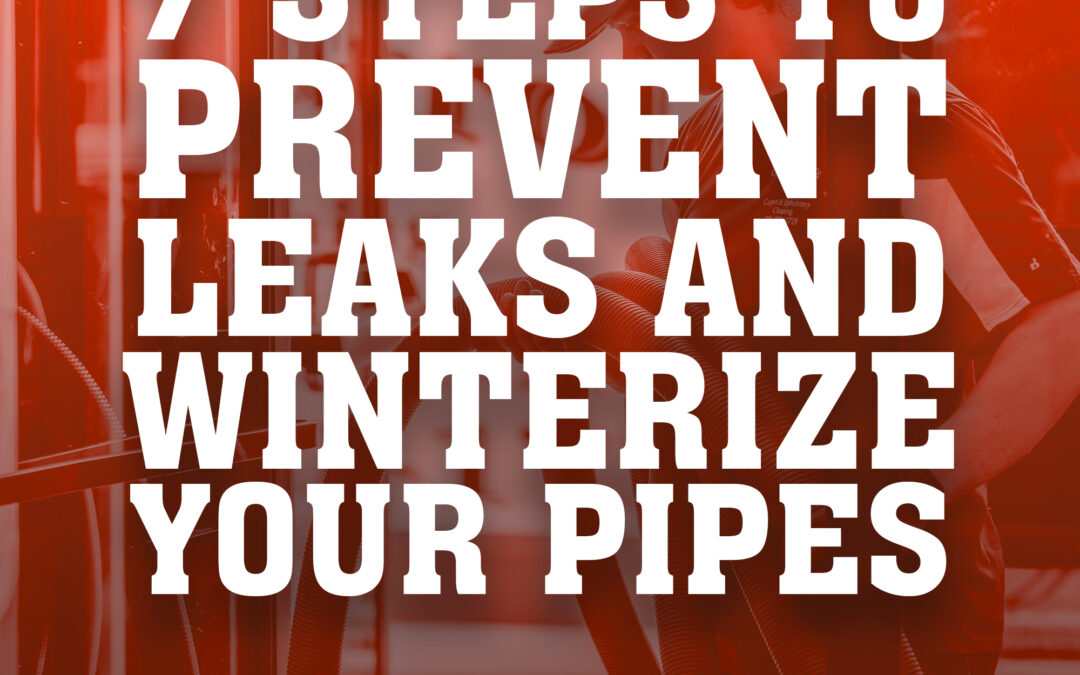With winter’s chill comes home maintenance challenges, and among them is the threat of freezing pipes. A burst pipe can lead to costly repairs and serious water damage, understanding how to winterize your pipes is essential.
Step 1: Insulate Exposed Pipes
One of the simplest and most effective ways to prevent frozen pipes is to insulate them properly. Start by identifying pipes that are most at risk. These are typically pipes running through unheated spaces or those located against exterior walls. Once you’ve identified these areas, you can use foam pipe insulation sleeves or insulation tape to wrap the pipes.
Step 2: Seal Gaps and Cracks
Another important step in winterizing your plumbing is sealing any gaps or cracks that could allow cold air to reach your pipes. Begin by inspecting the exterior of your home for any noticeable gaps. Use caulk or spray foam to seal these openings. Pay special attention to areas where utilities enter the home, such as cable lines and plumbing entry points.
Step 3: Disconnect and Drain Outdoor Hoses
Water left inside hoses can freeze and expand, putting pressure on your home’s plumbing system. To avoid this, it’s essential to disconnect and drain all outdoor hoses before the temperatures drop. If your outdoor faucets have shut-off valves, turn them off and open the faucet to allow any remaining water to drain out.
Step 4: Keep Your Home Warm
Keeping your home warm during the winter months is not only about comfort, it’s also about keeping your pipes safe. Maintaining a consistent indoor temperature, even when you’re away, is crucial to preventing frozen pipes. Set your thermostat to at least 55°F, even if you’re leaving for an extended period.
Step 5: Allow Faucets to Drip
Allowing faucets to drip is a classic trick to prevent pipe freezing, and for good reason. Focus on faucets connected to exposed pipes, especially those on exterior walls. By letting these faucets drip, you keep a small amount of water flowing through the system, which can prevent ice from forming.
Step 6: Use Heat Tape on Vulnerable Pipes
There are two main types of heat tape: self-regulating and manual. Self-regulating tape automatically adjusts its heat output based on the surrounding temperature, while manual heat tape requires you to plug it in and unplug it as needed. When using heat tape, follow the manufacturer’s instructions carefully, and ensure it’s properly installed to avoid any electrical hazards.
Step 7: Know How to Shut Off the Water Supply
The main shut-off valve is typically located where the water line enters your home. Make sure everyone in your household knows its location and how to operate it in an emergency. Quick action can make all the difference in minimizing water damage.
Conclusion
Winterizing your pipes might seem like a daunting task, but with these seven steps, you’ll have peace of mind knowing your home is well-protected against the cold. From insulation to heat tape, each step plays a vital role in preventing frozen pipes and the costly damages they can cause.
For 24 hour emergency water restoration services, give us a call at 701-721-1719

